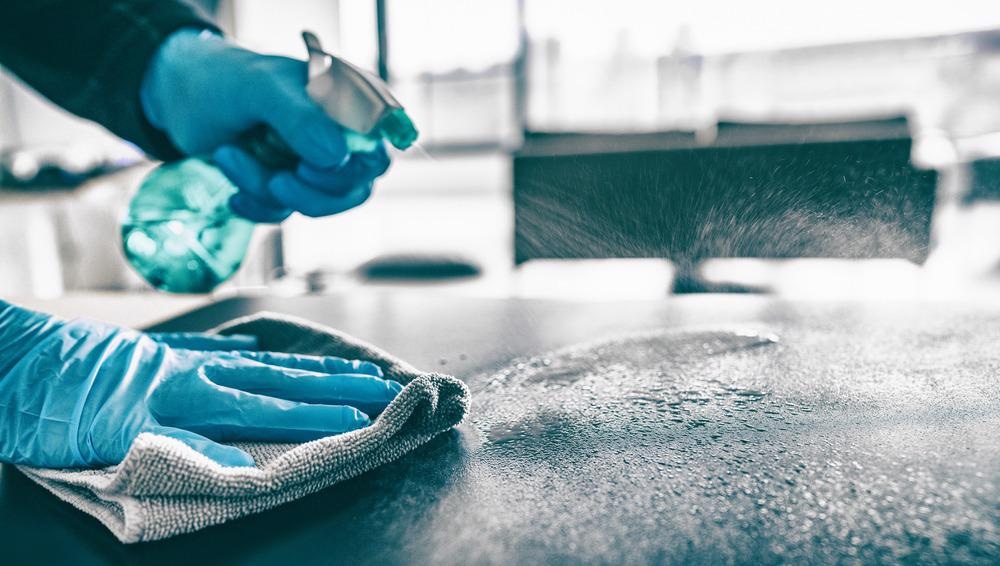Concern over infections from pathogenic microbes on surfaces has led to significant research available as a pre-proof in the Journal of Environmental Chemical Engineering. This innovative study has explored the concept of self-cleaning titanium dioxide photocatalysts through silver and reduced graphene oxide layers.

Study: Antibacterial self-cleaning binary and ternary hybrid photocatalysts of titanium dioxide with silver and graphene. Image Credit: Maridav/Shutterstock.com
Why is Self-Cleaning a Concern?
Microorganisms have the potential to cause severe harm, and with infectious pathogens and pathogenic microbes being ubiquitous on all surfaces, the spread of infections has resulted in deep concern.
This is especially an issue within the healthcare sector, with hospitals carrying any number of pathogens that can spread to the vulnerable and immunocompromised.
These pathogens have the potential to result in severe infections and even death; an example of this is methicillin-resistant staphylococcus aureus (MRSA). MRSA is a superbug that is responsible for several difficult-to-treat infections and can lead to sepsis if left untreated.
The World Health Organization has previously reported on many deaths as a result of healthcare-associated infections, which can be attributed to multiple drug-resistant pathogens.
The excessive prescription of antibiotics and antimicrobial drugs can be held accountable for this unfortunate truth. With the SARS-CoV-2 (COVID-19) pandemic also illustrating the transmissibility of infections, researchers have started to investigate the use of antimicrobial surfaces.
Antimicrobial surfaces could be a potentially useful approach to prevent bacteria from adhering to surfaces; this would also reduce the effect bacteria can have on mechanical interfaces such as aquatic flow systems, medical implants and even contact lenses.
The current methods of cleaning bacteria-prone surfaces include the use of aggressive chemicals as well as ultraviolet light; however, with a self-cleaning effect that utilizes these two conventional mechanisms through a photocatalytic material, conventional methods can be advanced and improved against resistant microbes.
Photocatalytic Materials
Photocatalytic materials can be described as being able to decompose harmful substances under sunlight which comprises ultraviolet rays.
The primary material currently used for photocatalysts consists of titanium dioxide (TiO2), which is known for its antimicrobial attribute, enabling the elimination of microorganisms including bacteria, viruses, and fungi.
Surfaces with this coating material benefit from its antimicrobial effect as well as self-cleaning behavior.
Additionally, with exciton pairs produced by photoexcitation of TiO2 reacting with water and oxygen to generate reactive oxygen species, such as hydroxyl radicals and superoxide radicals, the potential to destroy bacteria and reduce bacterial growth is high.
When used on surfaces, the use of photocatalysts includes the decomposition of dirt enhanced by a super-hydrophilic effect on active catalytic surfaces that are in contact with water.
The trigger for this can be through the direct oxidation of adsorbing contaminants after irradiation of the surface by UV light.
The formation of thin water films can make surfaces easier to clean, with contaminants being easier to remove. These can make for effective materials for glass panes, mirrors, and roofing tiles.
The current researchers have explored the enhanced effect of titanium oxide for use as photocatalytic materials, using silver (Ag) and reduced graphene oxide (rGO).
This study comprised the preparation of silver nanospheres using the polyol method and then creating nanohybrids of Ag/TiO2 and Ag/TiO2/rGO through hydrothermally modified sol-gel synthesis.
The researchers found that the addition of graphene into the silver and titanium dioxide system further enhanced the photocatalytic performance of the duo, which may be due to the charge separation at the interfaces.
Revolutionary Translation
The ternary Ag/TiO2/rGO nanohybrid that was developed by these researchers is a novel approach resulting in a superior photocatalyst with effective antibacterial and antimicrobial effects along with highly efficient self-cleaning properties.
The experiments performed with bacteria such as E.coli and S.aureus concluded almost 100% bacterial inactivation, which would be revolutionary for use on surfaces to reduce transmission of pathogenic microbes.
The importance of developing a photocatalytic material with a self-cleaning and antimicrobial effect is critical for the reduction and prevention of transmissible pathogenic microbes.
This can also be applied in fields that also impact the transmissibility of bacteria and infectious microbes, such as water treatment systems, surfaces that prevent the growth of bacteria, and hospitals for high-performing disinfected environments.
With potentially translatable research, this study has provided a basis to include physical methods to reduce the transmission of infectious microorganisms, which would be an practical addition to prevent the future pandemics if universally used.
Continue reading: Antibacterial Properties of Tungsten Oxide.
References
Padmanabhan, N., Thomas, R. and John, H., (2022). Antibacterial self-cleaning binary and ternary hybrid photocatalysts of titanium dioxide with silver and graphene. Journal of Environmental Chemical Engineering, p.107275. Available at: https://www.sciencedirect.com/science/article/pii/S2213343722001488?via%3Dihub
Further Reading
Cdc.gov. (2022). General Information | MRSA | CDC. [online] Available at: https://www.cdc.gov/mrsa/community/index.html
Sakka, S., (2013) Sol–Gel Process and Applications. Handbook of Advanced Ceramics, pp.883-910. Available at: https://doi.org/10.1016/B978-0-12-385469-8.00048-4
Disclaimer: The views expressed here are those of the author expressed in their private capacity and do not necessarily represent the views of AZoM.com Limited T/A AZoNetwork the owner and operator of this website. This disclaimer forms part of the Terms and conditions of use of this website.